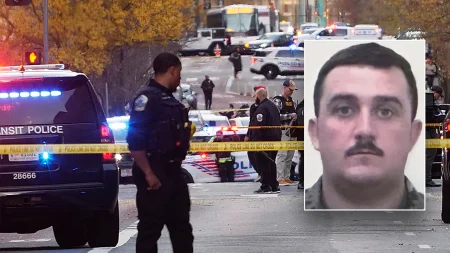Delhi’s Toxic Air Crisis: How Politics Stifles Solutions to India’s Deadly Pollution Problem
In the pre-dawn hours, as Delhi stirs to life, a thick blanket of gray-brown smog already hangs over the sprawling metropolis. Visibility drops to mere meters. Eyes sting. Throats burn. The acrid taste of pollution coats every breath. For Delhi’s 32 million residents, this isn’t an occasional weather event—it’s simply another day in what has become one of the world’s most polluted urban environments. The Air Quality Index (AQI) routinely soars past 300, sometimes exceeding 500 during winter months, catapulting the readings into the “severe” or “hazardous” categories. By comparison, most developed cities consider anything above 100 cause for concern. Behind these alarming statistics lies a complex web of environmental, geographical, and human factors—but increasingly, experts point to one critical obstacle blocking meaningful progress: political will.
The Deadly Consequences of Delhi’s Pollution Crisis
The human toll of Delhi’s air pollution emergency can be measured in stark numbers that would trigger immediate national emergencies elsewhere. According to research published in The Lancet Planetary Health, air pollution contributes to approximately 1.7 million premature deaths annually across India, with Delhi bearing a disproportionate burden of this public health catastrophe. Hospitals report dramatic surges in respiratory illnesses, with children and the elderly particularly vulnerable. Dr. Arvind Kumar, a prominent chest surgeon at Delhi’s Sir Ganga Ram Hospital, describes what he sees in stark terms: “I have been performing lung surgeries for over three decades. Earlier, I would find black spots only in smokers’ lungs. Now I see them in teenagers who have never smoked.” Medical professionals routinely advise residents with respiratory conditions to leave the city during winter months when pollution peaks—effectively creating a class of environmental refugees within India’s borders. Beyond the immediate health impacts, research indicates connections between prolonged exposure to poor air quality and increased risks of heart disease, stroke, diabetes, and cognitive decline, suggesting the full dimensions of the crisis may not be understood for generations.
A Perfect Storm of Pollution Sources
Delhi’s air quality crisis stems from an unfortunate convergence of geographical vulnerabilities and human activities. Located in India’s northern plains, the city sits in a topographical bowl that traps pollutants, particularly during winter when temperature inversions prevent vertical air circulation. This natural disadvantage combines with a perfect storm of pollution sources. Agricultural stubble burning in neighboring states like Punjab and Haryana creates massive smoke plumes that drift toward the capital during post-harvest seasons. Within city limits, vehicular emissions from Delhi’s 13 million registered vehicles pump out nitrogen oxides and particulate matter. Construction dust, industrial emissions, and coal-fired power plants contribute their share. Perhaps most visible to residents are the countless small fires lit for warmth or waste disposal during colder months. Environmental policy expert Anumita Roychowdhury of the Centre for Science and Environment explains, “Delhi’s pollution is not one problem but many layered problems operating simultaneously across a vast airshed that extends far beyond the city’s boundaries.” This complexity demands coordinated, multi-sectoral responses—precisely the kind of governance challenge that India’s fragmented political landscape struggles to address.
Political Paralysis: Why Solutions Remain Elusive
The technical solutions to Delhi’s air emergency are largely known. Experts have for years advocated for stricter emissions standards, improved public transportation, industrial regulations, alternatives to crop burning, and clean energy transitions. Yet implementation repeatedly falters at the intersection of political jurisdictions and competing priorities. “Air pollution in Delhi represents a classic governance challenge,” says political scientist Navroz Dubash of the Centre for Policy Research. “The sources cross jurisdictional boundaries while the impacts affect everyone regardless of socioeconomic status. Yet the political incentives for cooperation remain weak.” The Delhi metropolitan region spans multiple states governed by different political parties, creating a patchwork of often contradictory policies. The federal nature of India’s governance structure means agricultural policies affecting stubble burning fall under state jurisdiction, while vehicular standards are set nationally. This fragmentation produces a political environment where blame-shifting becomes more expedient than problem-solving. When air quality deteriorates each winter, a predictable cycle of finger-pointing ensues: Delhi’s government blames neighboring states for stubble burning; those states point to Delhi’s vehicles and industries; central authorities criticize local implementation failures. Meanwhile, emergency measures like odd-even vehicle rationing schemes and temporary construction bans represent political theater rather than sustainable solutions—highly visible actions that create the impression of responsiveness without addressing underlying causes.
The Economic Paradox Fueling Policy Hesitation
Beneath the political fragmentation lies a deeper economic tension that further complicates pollution mitigation efforts. India’s development model continues to prioritize rapid economic growth, with environmental concerns often viewed as potential constraints rather than complementary objectives. This creates powerful disincentives for politicians to champion restrictions on industries, construction, or transportation that might slow economic activity. Economist Jyoti Parikh, who has studied the economics of pollution control measures, notes: “The perceived short-term economic costs of stringent environmental regulations create political resistance, even though the long-term economic benefits of cleaner air—through improved public health, productivity, and quality of life—far outweigh these costs.” This economic reasoning extends to agricultural policies. Farmers in Punjab and Haryana, already facing economic pressures, resist alternatives to stubble burning without substantial financial support. Their political representatives, in turn, are reluctant to impose additional burdens on a key constituency. The result is a classic collective action problem: the benefits of cleaner air would be shared by all, but the costs of transition fall disproportionately on specific sectors and regions. Without political leadership willing to address these distributional questions, the status quo persists despite its deadly consequences.
Grassroots Pressure and Judicial Intervention: Signs of Change
Despite the entrenched political obstacles, there are nascent signs that public pressure and judicial activism are slowly shifting the political calculus around pollution. A growing environmental movement, particularly among Delhi’s middle class, has elevated air quality as an electoral issue. Parents’ associations have organized school strikes and public demonstrations demanding clean air as a fundamental right. The Supreme Court of India has repeatedly intervened, issuing directives on everything from firecracker bans to stubble burning penalties, effectively forcing political action when elected officials hesitate. Environmental lawyer Ritwick Dutta points to these developments as potentially transformative: “What we’re witnessing is the emergence of clean air as a political right that transcends traditional voting blocs. Citizens increasingly view breathable air not as an environmental luxury but as a basic governance failure.” These pressures have produced some policy responses. The national government has accelerated the transition to cleaner fuel standards, invested in air quality monitoring infrastructure, and launched financial support programs for farmers to adopt alternatives to stubble burning. Delhi has expanded its metro system and electric bus fleet while implementing the Graded Response Action Plan that triggers escalating restrictions based on pollution levels. Yet these measures remain insufficient relative to the scale of the crisis, implemented inconsistently across political boundaries, and vulnerable to shifting political priorities.
The Path Forward: From Political Obstacle to Political Opportunity
The transformation of Delhi’s air quality from perpetual crisis to managed problem will ultimately require reimagining pollution not merely as an environmental challenge but as a governance imperative that transcends political divisions. Successful models exist elsewhere. China’s aggressive actions to improve air quality in Beijing demonstrate how political will, when finally aligned with environmental goals, can produce dramatic improvements. Beijing’s AQI readings, once comparable to Delhi’s, have shown significant improvement following coordinated national policies on coal usage, industrial emissions, and transportation. For India, addressing Delhi’s pollution could similarly become a showcase for effective governance rather than a symbol of its limitations. This would require several shifts in political approach: establishing an airshed management authority with real powers that transcend state boundaries; creating transparent accountability mechanisms that prevent blame-shifting; integrating air quality goals into economic planning rather than treating them as separate considerations; and framing clean air as an economic advantage rather than a constraint. Most fundamentally, it demands political leadership willing to make visible investments now for benefits that will largely accrue in the future—a particular challenge in democratic systems with short electoral cycles. As public health researcher Kalpana Balakrishnan observes, “Clean air may not immediately deliver electoral victories, but its absence is increasingly becoming a liability no politician can afford.” For Delhi’s residents, that shift can’t come soon enough. As another winter of hazardous air looms, the question remains whether their right to breathe might finally overcome the political inertia that has kept solutions just out of reach.










